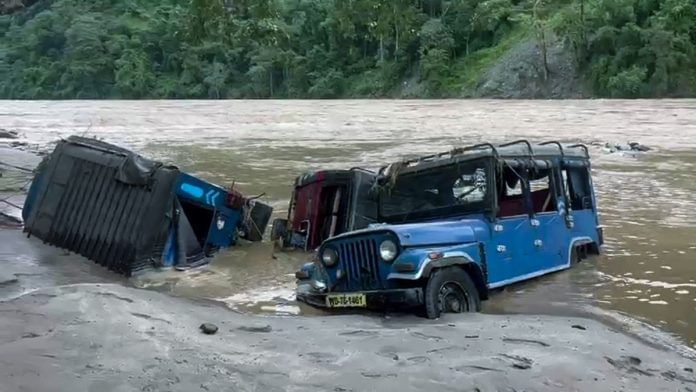India is taking its first steps toward insuring itself against a more unpredictable climate. The government last month gave a nod to exploring a nationwide climate-linked insurance plan that would deploy parametric insurance models. It would release payouts when heat, rainfall, or wind levels cross certain thresholds. This national plan could become the country’s first serious attempt to move beyond slow, ad hoc disaster relief funds and toward a system that anticipates losses before they spiral.
The move comes as extreme weather grows more frequent and more expensive. Between floods, droughts, cyclones, and heatwaves, India faces rising economic losses each year, 93 per cent of which are uninsured according to Swiss Re. This means costs are being borne by households, businesses, and governments in the aftermath of disasters.
For insurers, climate risk is rising on two fronts. On the hazard side, stronger storms, floods, and heatwaves are becoming more frequent. On the exposure side, urban growth and rising asset density are amplifying losses. Traditional models struggle to price these dual pressures, and when they do, affordability erodes. This protection gap has brought adaptation and risk finance back into focus ahead of COP30 in Brazil, where adaptation is a declared priority and climate insurance is entering the conversation through the House of Insurance summit.
Also read: India’s climate demands were once moral claims. Now ICJ says they’re international law
Why parametric insurance for climate?
The turn towards parametric insurance is based on both demonstrated experiments and the suitability of the instrument. Because extreme climate events often cause loss of earnings more than physical damage, conventional indemnity insurance is often poorly suited to it. Parametric designs link payouts to objective climate data rather than asset assessments.
Early pilots with heatwave and rainfall insurance in India have shown how and where these tools can be appropriately applied. In Rajasthan and Gujarat, thousands of informal women workers have received cash payouts when heat levels crossed 40°C. In Nagaland, a rainfall-indexed policy paid out after an unusually heavy monsoon. Both pilots cut administrative delays and reached beneficiaries quickly.
The challenge now is to knit these efforts into a coherent national platform. Such a platform could pool risks across states, set uniform data standards, and attract reinsurance. It would also help shift India toward a fiscal model in which disasters are pre-funded rather than handled ad hoc. Regional facilities, such as the Caribbean Catastrophe Risk Insurance Facility, are already demonstrating the successes of pooled parametric schemes across multiple countries. Many other climate-vulnerable economies would be watching these models closely.
Also read: India’s climate war is missing its first responders—urban local bodies
Insurance as infrastructure
When insurance payouts fail to match the damage on the ground, trust in the system erodes. That mismatch, known as basis risk, has undermined many early parametric insurance programmes to date. Reducing basis risk requires high-resolution data, frequent recalibration, and transparent communication, all of which are often scarce in low-resource settings.
Insurers will not expand coverage unless governments absorb part of the systemic exposure, be it through investments in early-warning systems and digital public infrastructure, or through financial instruments such as sovereign guarantees and first-loss capital that reduce expected losses. The India Meteorological Department (IMD) maintains one of the densest observation networks in the developing world. That data backbone helps lay the groundwork for a national parametric platform that could help link forecasts to disaster finance. To scale models, public reinsurance and regulatory support will also be crucial. Regulators can set standards and ensure solvency, while development banks (such as NABARD) can aggregate cooperative and rural risks or provide partial reinsurance. Public backing would reduce premium volatility, attract private capital, and make coverage affordable. By sharing risk, the state signals confidence and creates space for insurers and reinsurers to follow. In that sense, insurance functions as public infrastructure—as essential to resilience as health systems, data networks, or social protection.
Also read: Circular finance can solve the climate action funding problem. And India can lead the way
Keeping pace with increasing exposure
Another reason national adaptation plans matter for insurance is that coverage cannot keep pace with risk if underlying exposure continues to rise with the changing climate. The affordability of premiums depends on lowering baseline vulnerability. Every dollar spent on better land-use regulation, resilient infrastructure, and stricter enforcement of building codes lowers expected losses and, in turn, the cost of coverage. National governments are uniquely positioned to align these incentives. Through their adaptation plans, they can set the rules that connect infrastructure planning, insurance markets, and social protection.
Insurance will never cover every risk, but it can anchor a broader architecture of pre-arranged and anticipatory finance. At the global level, the G7 and V20-backed Global Shield against Climate Risks is advancing this idea by linking sovereign risk pools, contingency credit, and forecast-based funding to ensure liquidity before disasters escalate. Humanitarian models are also responding to parametric insurance and forecast-based disbursements to pre-position resources.
The task now is to turn small pilots into a coherent national system. Coherence would entail systems that use data and public support to make climate insurance affordable and predictable. If India can integrate parametric insurance into its adaptation planning, it would not only protect lives and livelihoods but also show that financial preparedness is as important as physical infrastructure. If it succeeds, India may just show how to make climate adaptation not only possible, but affordable.
Kartikeya Bhatotia is a Climate Fellow at Harvard University. Views are personal.
(Edited by Theres Sudeep)






